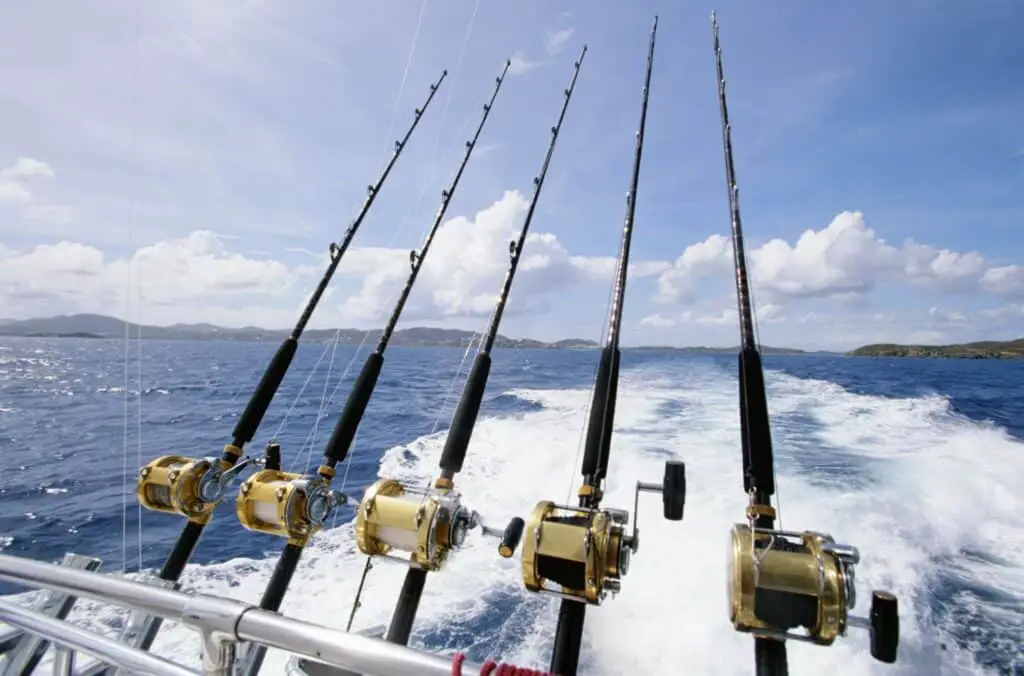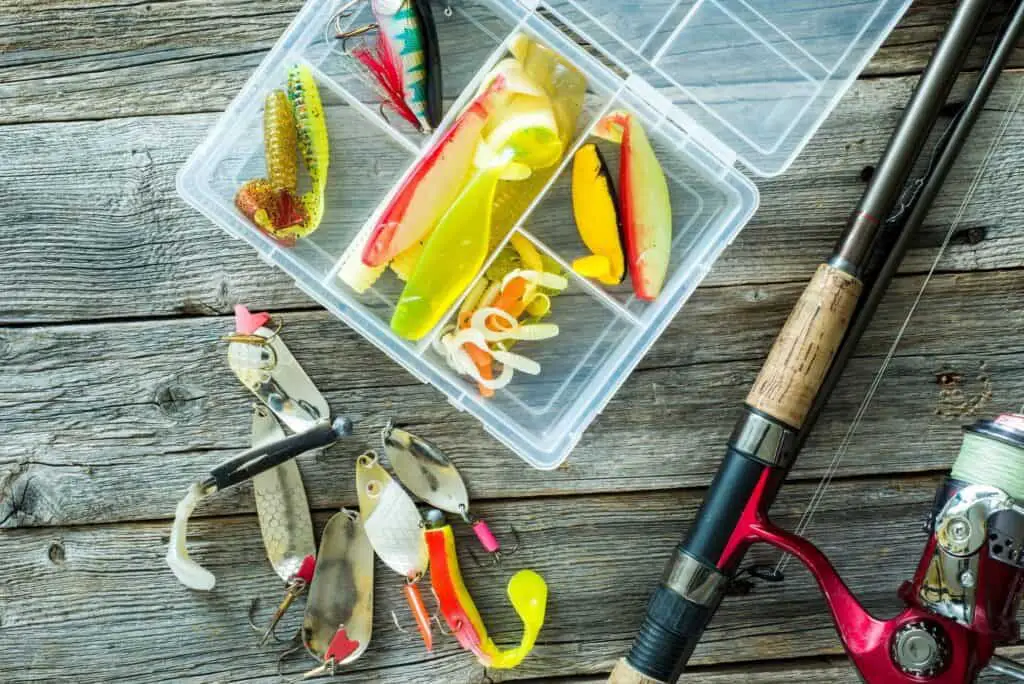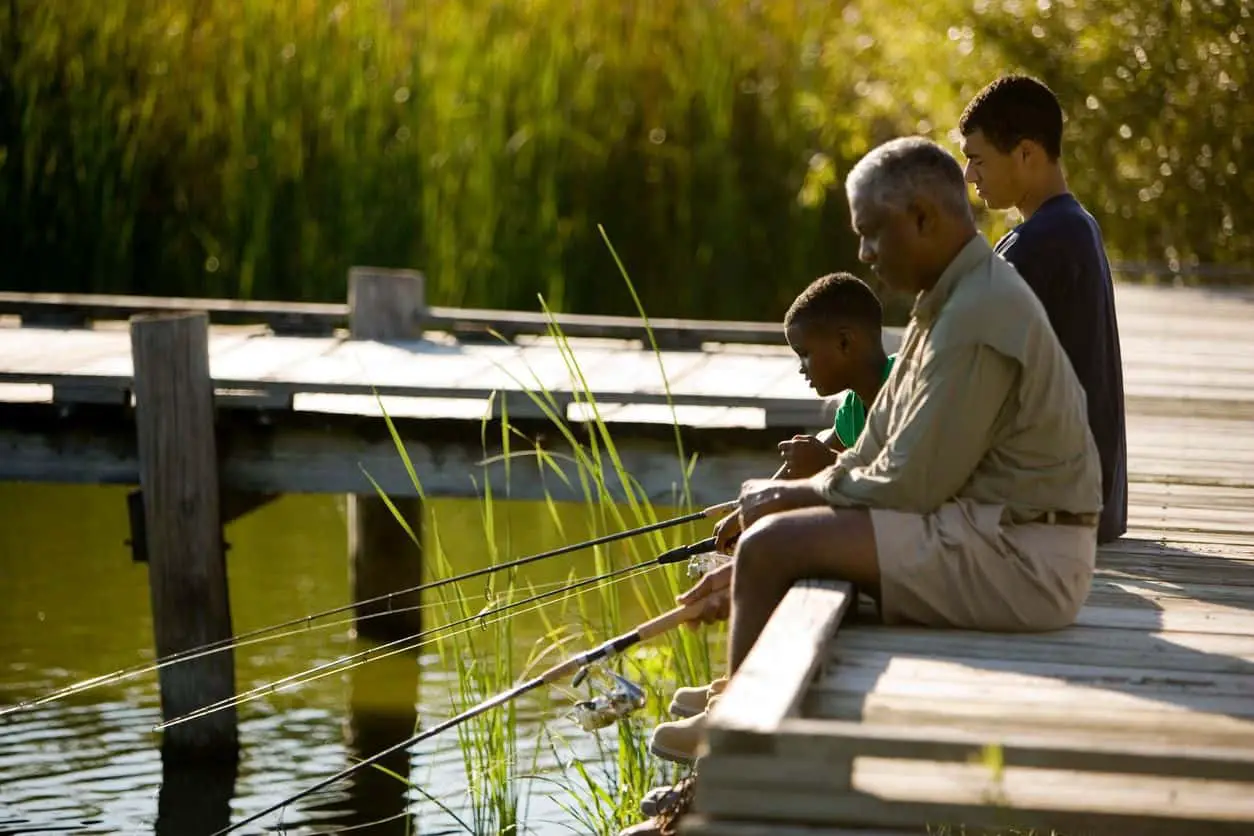Fishing is popular all over the world. We wanted to know what the most popular fishing style was, so we did some research.
Bait-fishing is the most popular style of fishing. Bait-fishing involves using conventional tackle, whether spinning, baitcasting, offshore/trolling, and either dead or live bait. The angler simply trolls the bait behind the boat, casts it out, lets it sit, or can even sight-cast to a spotted fish.
Bait-fishing is the most popular type of fishing because it is the easiest and requires the least skill. An angler simply needs to catch or purchase their bait of choice, select a location, cast their bait out, and wait.
Popular Bait-fishing Bait
When an angler decides to use bait for fishing, they must first target a species or several species to select the proper bait. Generally speaking, every fish will eat other fish, so baitfish such as minnows are always good choices.
Baitfish can include a variety of baits that can include but are not limited to shiners, sardines, herring, pinfish, menhaden, or minnows. Baitfish are specific to the area, meaning a saltwater baitfish cannot be used as live bait in freshwater as it will die, and vice-versa.
The angler should also try to target the fish using their food source, using a baitfish that their target is feeding on.
Crustaceans are another popular type of bait. Crustaceans used for bait can include but are not limited to shrimp, crabs, clams, or crawfish. Typically, clams and crawfish are used in freshwater, while shrimp and crabs are intended for saltwater species.
Other baits used when bait-fishing can include chicken livers, squid, worms, crickets, corn, and bread.
Popular Bait-fishing Techniques
When an angler bait-fishes, they can select from a few different techniques to successfully catch their quarry. The main techniques are trolling, drifting, bottom fishing, free-lining, or sight-casting.

1. Trolling
Trolling involves dragging a bait behind the boat at a low speed. This technique is mainly used in saltwater but certainly has a place in freshwater as well. Most offshore saltwater species are targeted through trolling, such as billfish, wahoo, or mahi-mahi. In freshwater, anglers target walleye, crappie, and striped bass.
2. Drifting
Drifting is similar to trolling but done more stealthily and naturally. The angler throws bait out in the opposite direction of the current. They will then let out the appropriate determined amount of line and then allow the boat’s pull drifting in the current to move the bait along the water column.
Similar to trolling, drifting covers a lot of areas, helping the angler locate the fish quicker.
3. Bottom Fishing
Bottom fishing is the complete opposite of trolling or drifting. As the name implies, the angler is fishing their bait on the bottom. The bait is held on or near the bottom using a lead weight or “sinker.”
This style is typically used when using cut-bait or dead bait, but keeping a lively baitfish in one spot can be like a dinner bell to nearby gamefish who sense the panicking bait.
4. Free-lining
Free-lining is a technique that can be done in two ways- either with a bobber or float or without anything between the hook and rod. Typically, anglers who bait-fish use a float to help them know when a fish is taking their bait.
However, for a more natural and slightly more complicated approach, the angler can keep a finger on the line and feel the bite or see the slackline begin to get taunt.
5. Sight-casting
Sight-casting is the last technique a bait-fisherman can utilize. Sight-casting does require some skill on the angler’s part, though. The angler must spot and stalk the fish; then, the angler must make a very accurate and stealthy cast to present the bait so that the fish will eat and not be scared off.

Popular Bait-fishing Tackle
Bait fishing uses a variety of tackle. As with any fishing, the tackle used must be appropriate for the fish being targeted. This is the only limitation when selecting tackle.
A typical saltwater bait-fishing rig involves a seven-foot medium action rod for long casts and sensitivity; a basic j-hook or circle hook tied on a fluorocarbon or monofilament leader, connected to the mainline either with a swivel or line to line knot; and a reel that is appropriate for the circumstance in regards to line capacity, drag strength, and overall size.
Freshwater bait-fishing is usually a six to seven-foot rod with a monofilament line of appropriate breaking strength. The end of the line holds the appropriate size hook. Again, the weight and the use of a bobber is up to the angler.
If targeting sharks or toothy game fish such as mackerel or wahoo, the angler might consider using a wire leader to avoid unwanted break-offs.
When using bait, the angler wants a tackle set-up that provides the most stealth as it offers the fish’s actual food source. The wrong sized hook, line, or bait can turn away fish.
When selecting a weight, consider the current. If too little weight is used and your bait will simply float away in the current. You’ll have to cast again to return the bait to the proper spot.
Other Popular Fishing Styles
Bait-fishing may be the most popular overall, but other types of fishing are very popular. Fly-fishing and artificial lure fishing are both still very popular methods of fishing.
Artificial fishing involves the angler using a variety of lures to target the fish they are after. The angler will select a lure that imitates a food source for the fish they are fishing for.
Artificial lure fishing is done by more experienced anglers who know what the fish are feeding on and how to make something fake look real. Artificial lures can imitate bait-fish, frogs, lizards, shrimp, crabs, worms, snakes, and crawfish.
Fly-fishing is the most challenging and advanced style of fishing. It is popular due to both its challenging nature and its traditional roots in the fishing world. Fly-fishing involves the angler using a long flexible rod to cast a small artificial lure called a “fly.”
If you want to try fly fishing but don’t have the gear, check out, “Can You Fly Fish With A Spinning Reel?”
This fishing style can be done anywhere conventional fishing can be done and is used to target fish in the most stealthy way possible. Flies can imitate various food sources for fish that include, but are not limited to, baitfish, shrimp, crabs, frogs, crawfish, and insects.
Want to learn more? Check out “Can You Fly Fish Anywhere?”
Another style of fishing that has gained recent popularity is bow-fishing. Although not personally a fan of this fishing style, it can be very effective in harvesting gamefish.
Bow-fishing is done by an angler who uses a compound hunting bow equipped with a reel on it. The angler will spot the fish, aim the arrow, and shoot the fish. The arrows are specifically designed for fish and have a string attached to them, the other end going to the reel on the bow.
Conclusion
Each angler prefers their style of fishing. The angler sees it as the most effective and enjoyable. Generally speaking, though, bait-fishing is the most popular as it is done by all angling skill and ability levels.
Bait-fishing can be done from shore or on a boat and offers the angler the chance to use the exact food source that the fish are feeding on.
It is just up to the angler to figure out what bait to use and how to present it. Bait-fishing is especially fun and effective for taking kids fishing. It is very interactive, and if fish are feeding, the kids will not be bored long.
A quick Google search can help you get set up for whatever fish species you want to target. Be sure to use the right tackle to offer the best presentation to get the fish to take your bait. If the technique you first try doesn’t work, try another.
If a dead bait is not getting any attention, then try a lively one. Regardless, bait-fishing is the most laid back way of fishing and truly offers the angler the chance to relax and enjoy the outdoors.


